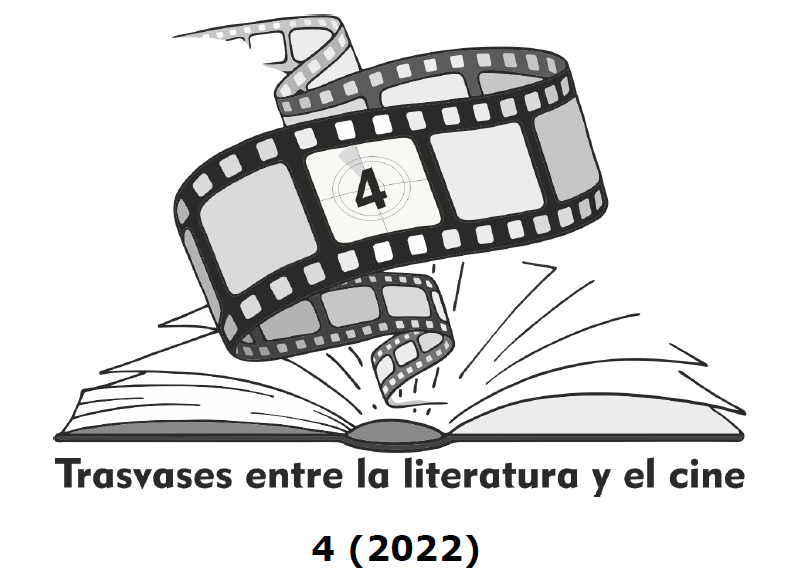Transnational adaptation as a path to formal heterogeneity in Oyuki, the virgin (Kenji Mizoguchi, 1935)
DOI:
https://doi.org/10.24310/Trasvasestlc.vi4.14553Keywords:
Adaptation, Japanese cinema, Guy de Maupassant, Kenji Mizoguchi, Literature and CinemaAbstract
Oyuki, the virgin (Maria no Oyuki, 1935), a film usually regarded as prior to the consolidation of Kenji Mizoguchi's unique style, is noted for its formal heterogeneity. The filmmaker already works with some of his recognizable features, such as long shots modulated by the movement of the actors, but he makes room for a wide range of resources that would hardly find continuity in his later films. There are examples of analytical decoupage, intellectual montage or shot-counter-shots, which, moreover, are not sustained throughout the film. This article aims to relate this vagueness to Boul de seuf, the short novel by Guy de Maupassant that the screenplay adapts, since the translation of the plot and the context of the book works in a similar fluctuation between the original text and its multiple divergences.
Downloads
Metrics
Publication Facts
Reviewer profiles N/A
Author statements
Indexed in
-
—
- Academic society
- N/A
- Publisher
- Universidad de Málaga
References
AUMONT, Jacques (1998), «Apprendre le Mizoguchi», Cinémathèque. Revue semestrielle d'esthétique et d'histoire du cinéma, 14, págs. 14-27.
BOCK, Audie (1985), Japanese Film Directors, Tokio-Nueva York, Kodansha.
BOUREAU, Alain (1978), «Maupassant et le cannibalisme social», Stanford French Review, 2, págs. 351-62.
BRAVO CASTILLO, Juan (2005), «Introducción», en G. Maupassant, Bola de sebo y otros relatos, Madrid, Espasa Calpe.
BURCH, Noel (1979), To the Distant Observer: Form and Meaning in Japanese Cinema, Berkeley, University of California Press.
DONALDSON-EVANS, Mary (1981), «The Decline and Fall of Elisabeth Rousset: Text and Context in Maupassant’s “Boule de suif”», Australian Journal of French Studies, 18, págs. 16-34.
EISENSTEIN, S. M. (2001), Hacia una teoría del montaje. Volumen 1, Barcelona, Paidós.
GOTO-JONES, Christopher (2009), Modern Japan: A Very Short Introduction, Oxford, Oxford University Press.
MAUPASSANT, Guy de (2005), Bola de sebo y otros relatos, trad. de J. Bravo Castillo, Madrid, Espasa Calpe.
MIZOGUCHI, Kenji (1971), Mizo on Mizo, Cinema 6, 3, págs 15-18
MORTON, W. Scott y J. Kenneth OLENIK (2005), Japan: Its History and Culture, Nueva York, McGraw-Hill.
PINAR, Alex (2019), Western Literature in Japanese Film (1910-1938), Universitat Autònoma de Barcelona [Tesis Doctoral].
SANTOS, Antonio (1993), Kenji Mizoguchi, Madrid, Cátedra.
SATO, Tadao (2008), Kenji Mizoguchi and the Art of Japanese Cinema, Oxford, Berg.
SATO, Tadao (1995), Le cinéma japonais, tome 1, París, Editions du Centre Pompidou.
VARLEY, Karine (2008), Under the Shadow of Defeat: The War of 1870–71 in French Memory, Basingstoke, Palgrave Macmillan.
YOMOTA, Inuhiko (2019), What Is Japanese Cinema? A History, Nueva York, Columbia University Press.
Downloads
Published
How to Cite
Issue
Section
Categories
License
All authors published in this journal accept the following copyright terms:
a. Authors retain their authors´ rights (copyright) and grant First Publication Rights to the journal, which whill be published under a the Creative Commons Attribution-NonCommercial-ShareAlike 4.0 International (CC BY-NC-SA 4.0) license. All about this license is available in the following link: <http://creativecommons.org/licenses/by-nc-sa/4.0>
b. Authors may separately establish additional agreements for the non-exclusive distribution of the version of the work published in the journal (e.g. including it in an institutional repository, or publishing it in a book) with an acknowledgement of its initial publication in this journal.
c. Authors are allowed and encouraged to disseminate their work electronically (e.g. in institutional repositories or on their own website) as this can lead to productive exchanges, as well as earlier and more extensive citation of published work.
The author is responsible for obtaining permission from the copyright holder when using copyrighted materials.
This electronic journal is published by University of Málaga (UmaEditorial), thus it is necessary to cite the origin of any partial or total reproduction.








22.png)










